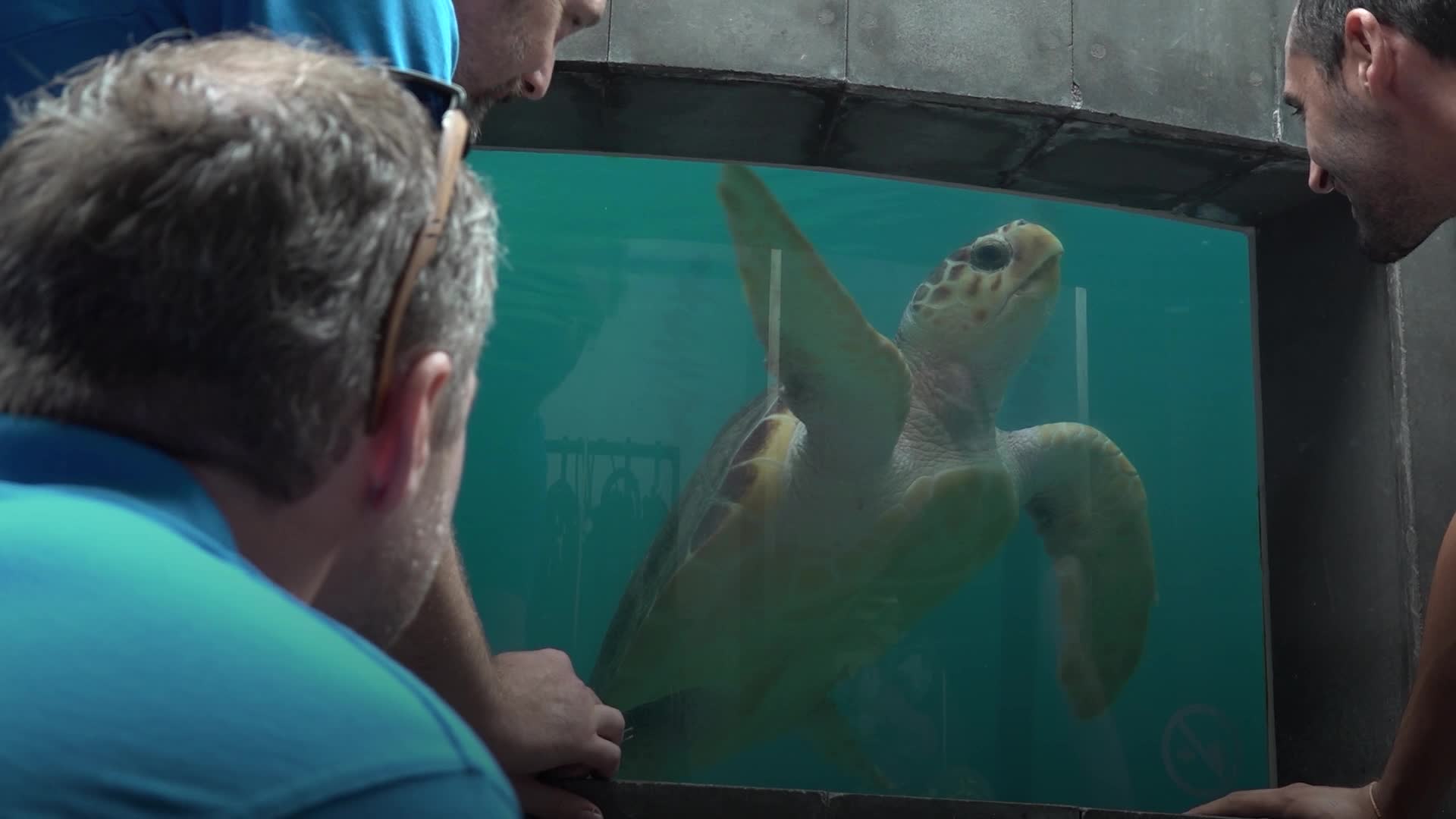
A loggerhead sea turtle has been returned to the wild following a successful and extensive rehabilitation programme by teams at SEA LIFE. Nazaré was discovered washed up on a beach in Barrow-in-Furness on 4 February, covered in algae and showing no signs of movement. Initially feared to be deceased, the turtle was found to be extremely weak, but alive, thanks to the quick response of a member of the public who alerted the British Divers Marine Life Rescue and SEA LIFE Blackpool team.
Upon her arrival at SEA LIFE Blackpool, Nazaré was severely cold stunned, with a body temperature of 13°C, suffering from pneumonia, and burdened with a 2cm thick build-up of algae and seaweed which covered her shell. As cold-blooded creatures, turtles can become severely hypothermic, malnourished and dehydrated in cold water. Whilst many do not survive such conditions, if they are found in time and receive the proper care and rehabilitation, they have a chance of being returned to the wild.

When Nazaré was found, she had a satellite fitted to her shell and, on closer inspection, she was found to be microchipped. Within 24 hours SEA LIFE used its network to reach out to other aquariums around Europe and managed to find out that the turtle had been released in June the previous year having been found stranded before at Saint-Hilaire-de-Riez, France. Nazaré’s care at SEA LIFE Blackpool involved gradually raising her body temperature, administering hydration injections, and closely monitoring her condition round-the-clock, including a 24-hour surveillance camera enabling aquarists to keep watch throughout the night.
The team also created floats to support her in order to make sure she didn’t drown, as well as using a toothbrush to clean her shell. Miraculously, within days, she began showing signs of improvement, eating and moving independently. Once stabilised, she was transferred to SEA LIFE Scarborough for further rehabilitation.
At SEA LIFE Scarborough, Nazaré continued her recovery in the quarantine area before moving to the ocean tank to build the necessary strength and muscle for her return to the wild. Throughout this period, she was closely monitored, ensuring she was eating well, gaining weight and showing normal behaviours. Once the team at SEA LIFE were happy Nazaré was fit, healthy and ready to be returned to the wild, they set about preparing the necessary paperwork for her release.
Working with Flying Sharks, a company dedicated to promoting sustainable use of the ocean, and the Portuguese authorities, the team secured Nazaré her very own turtle passport, enabling her to be flown to the Azores. This September, after all the paperwork was confirmed, Nazaré travelled to London Heathrow to Lisbon, then to Horta in the Azores, where she was temporarily housed at Porto Pim aquarium before her release in September. This journey mirrors the successful rehabilitation and release of Iona, a loggerhead turtle released by SEA LIFE last year.
.














